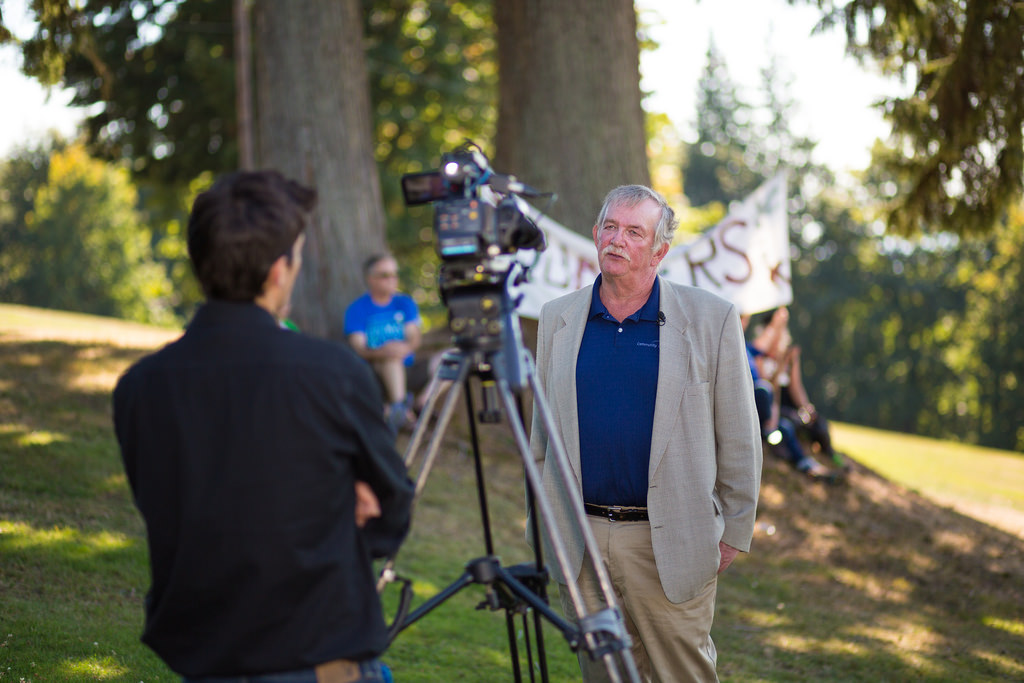
Adapting a big news story for local audiences is an increasingly popular trend in today’s news landscape, which is dominated by social media and viral videos. It helps everyone from small-market journalists who don’t have enough local news to fill a half-hour broadcast to Top 100 market journalists who want to provide a local perspective on popular national stories. This trend helps local broadcasters stay relevant in social media spheres, while giving their audience a look at the issue from within their own community.
So how do you start? How do you take a large, national news item and relate it to local people, places, or events?
Ask: How Does This News Affect People in Our Community?
First, start with the events and issues involved in the national story, and ask yourself how these might be affecting local people. For example, in the wake of the tragic June 17 church shooting in Charleston, South Carolina, people all over the country were shocked and saddened. Many were also frightened, wondering if they were safe in their own churches. Individuals in many parts of the country started to worry about race relations in their communities. Many questioned if a similar tragedy could happen right down the street.
Use Social Media as a Guide
In the global sphere of social media, this played out in many ways. News site posts about the tragedy were flooded with comments about everything from the confederate flag flying at South Carolina’s state capitol to whether or not the media should call accused shooter Dylann Roof a thug. Some argued about the definition of a hate crime, while others questioned Roof’s treatment by police when he was captured. Still others wondered how society shaped Roof and his outlook.
Relate These Concerns to the Local Community
These are all issues that could be explored in a local piece. Using this story as an example, here are some ways you could localize the issues: Do person-on-the-street interviews, asking individuals how they feel about the confederate flag. Do they think it should still fly at South Carolina’s capitol? How about in their own state? Do they see it as an expression of southern pride or a symbol of racism?
Another angle would be polling audience members about how safe they feel at their own religious establishment. Do they worry a similar tragedy could happen here? You could interview authorities at a nearby place of worship to ask if they’ve taken any security measures to protect their constituents. How does a local church balance being a welcoming place for everyone with protecting its members from violent crime?
Still other angles stem from addressing the issue of race relations in the local community. One option is to interview local civil rights leaders to get their opinion on how future racially-motivated crimes could be prevented. Find out what local people can do to improve race relations and make the community safer for everyone. Ask viewers how they would respond if someone they knew made racially-charged statements, as a friend of Roof’s alleges he did.
If Possible, Relate the National News to a Local Individual
Some of the most moving pieces of broadcast journalism focus on one person, while relating his or her struggles or triumphs to a larger issue. If at all possible, you should seek an individual who has had a similar experience to someone in the national story you want to localize. This can personalize almost any topic, from the Charleston shooting tragedy to Caitlyn Jenner’s transition to Tropical Depression Bill.
For example, if your story was about the Charleston shooting, you could interview a local person who was previously the victim of a hate crime. How did that person deal with the situation? Does he or she feel safe in the local community now? What does your subject think could be done to prevent future tragedies like the one in Charleston?
If you wanted to localize the Caitlyn Jenner story, you could interview a local transgender individual. Ask how he or she feels about the public reaction to Jenner’s transition. Did your subject experience similar reactions when coming out as transgender to friends and family? Has this person experienced discrimination in the nearby community?
If Tropical Depression Bill is causing rain in your area, interview a local business owner whose store has been affected by flooding. Does this problem mean a popular shop will be closed for a week? What effect will that have on the store owner and the business’ financial future? Ask an expert what steps businesses and individuals can take to protect themselves from flooding—sandbagging their doorsteps, investing in flood insurance, choosing a higher elevation to build a new location.
While you may expand the story to include expert opinion and even national perspectives, always remember to end by circling back to the individual you focused on at the beginning. Show the audience how the neighborhood business owner is cleaning out her store and filing an insurance claim. Remind your viewers of the national story’s close-to-home impact.
Always Remember to Relate Facts to the Local Community
Most national news stories can be localized with many different angles. No matter which one you choose to pursue, always remember to relate the facts you share—local or more general—to your viewers and the community’s concerns. Often, doing this one simple thing can encourage your audience members to consume local news coverage of a national story instead of just reading about it on a national news site.
[su_note]Pursue a future in broadcast journalism. Learn more about the School of Broadcast Journalism at the New York Film Academy. [/su_note]
